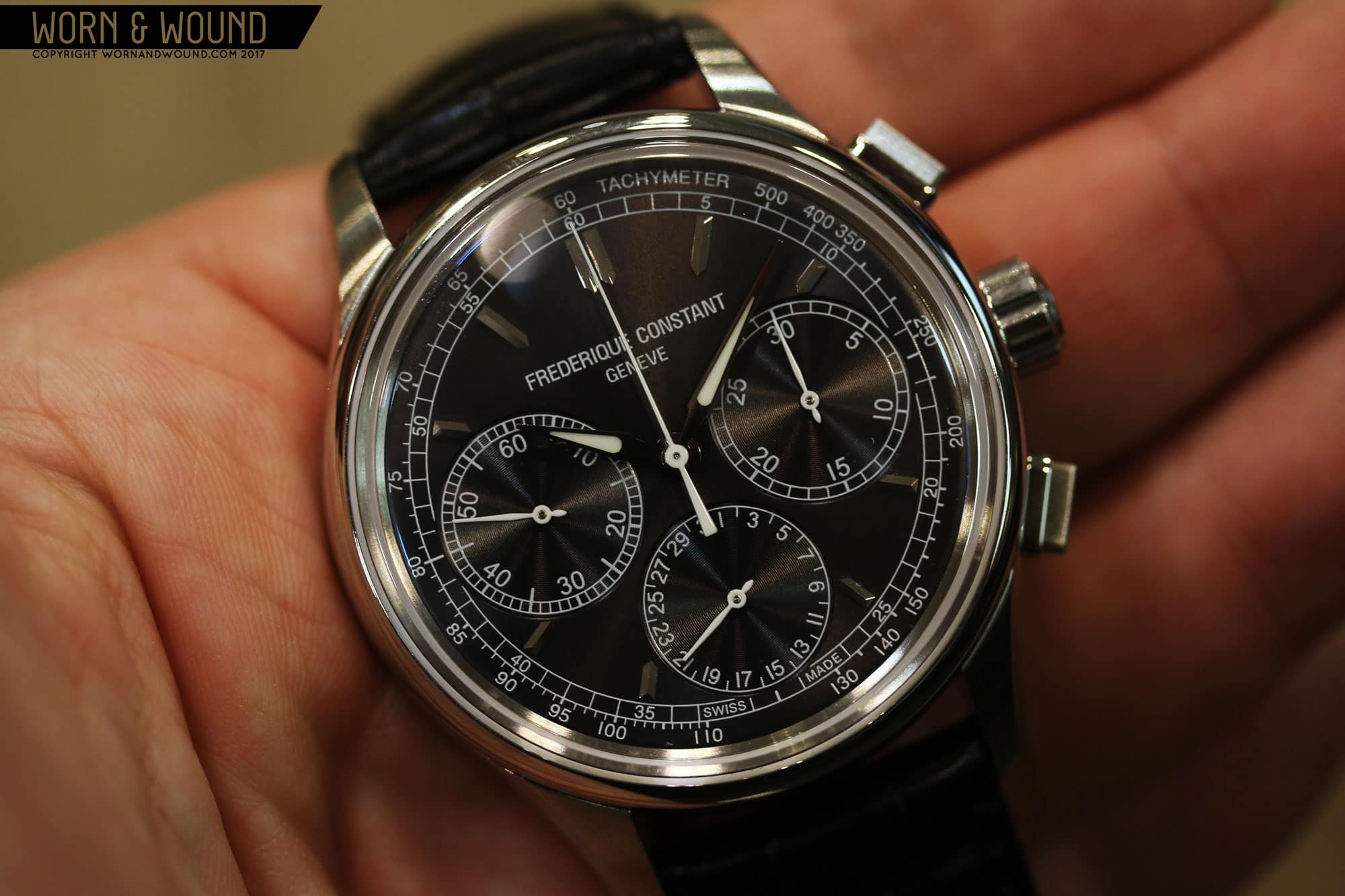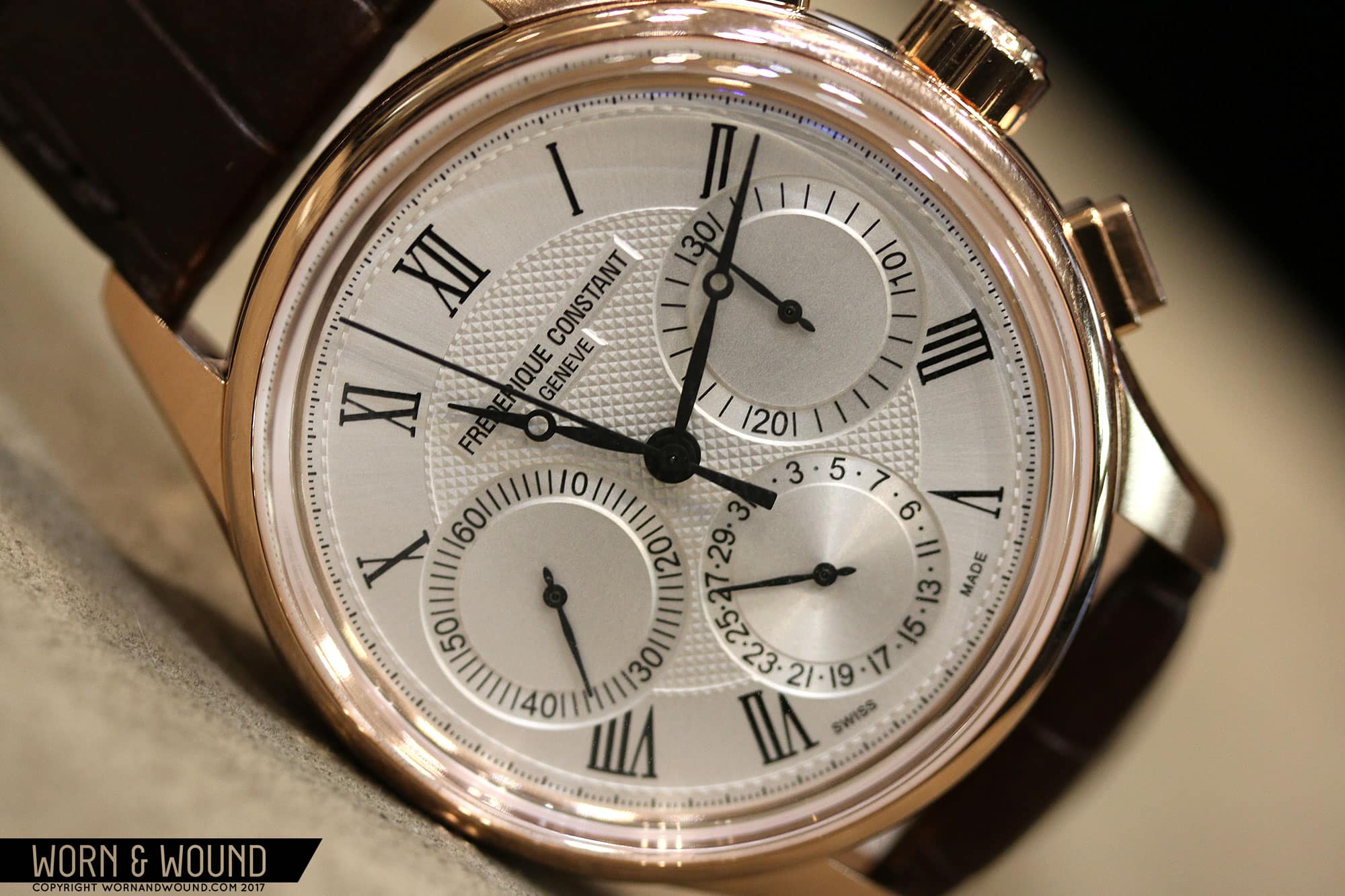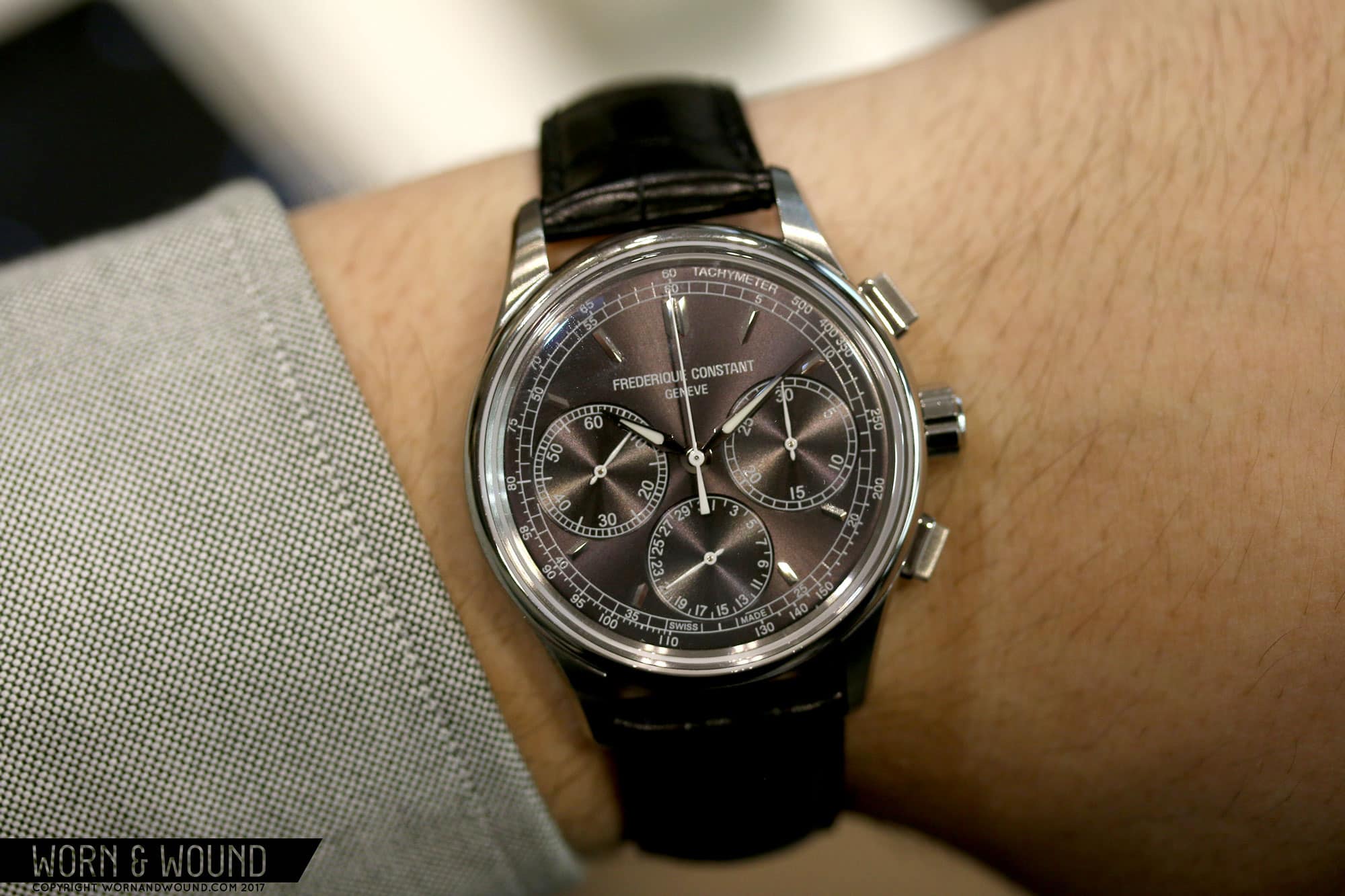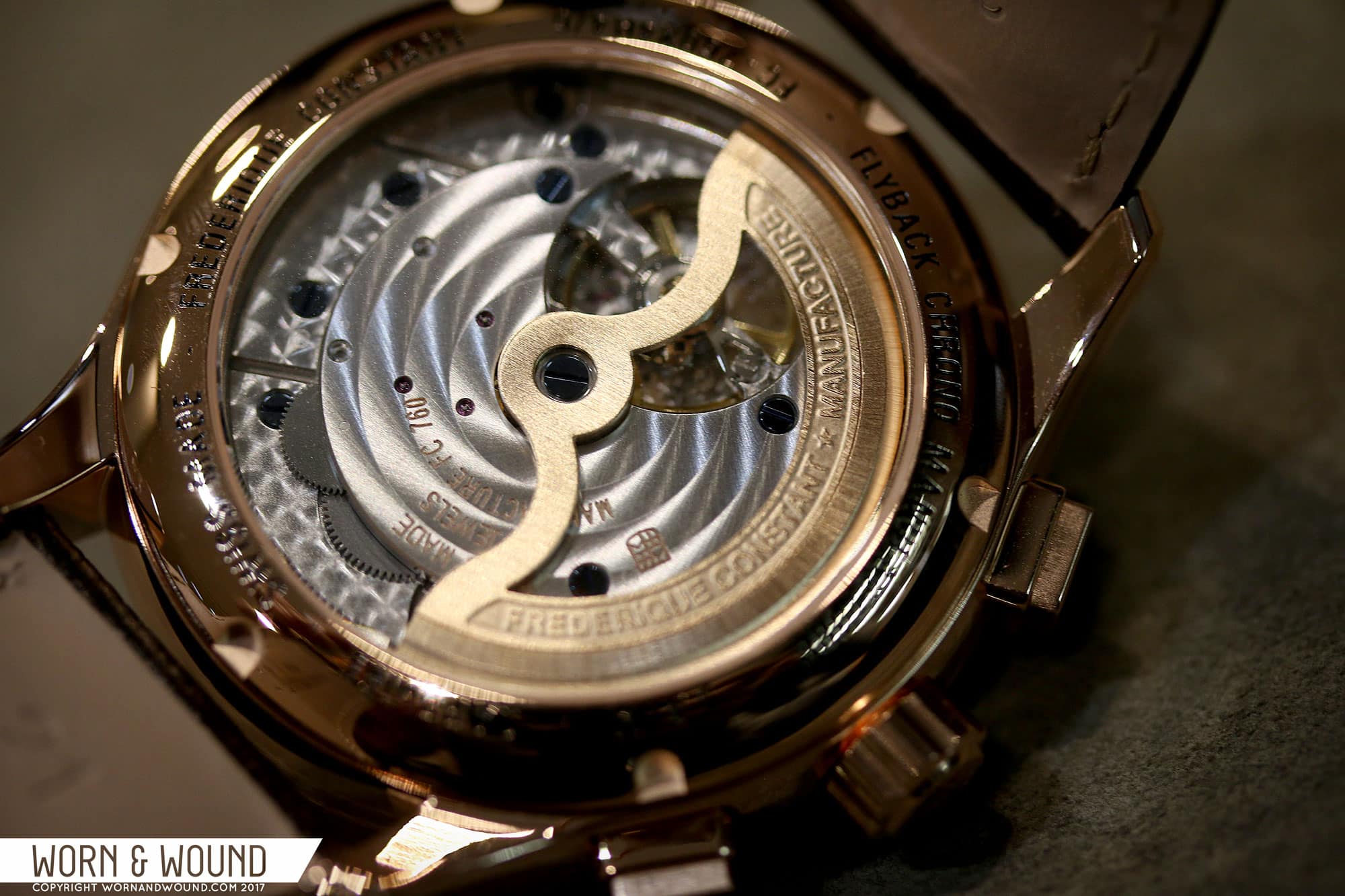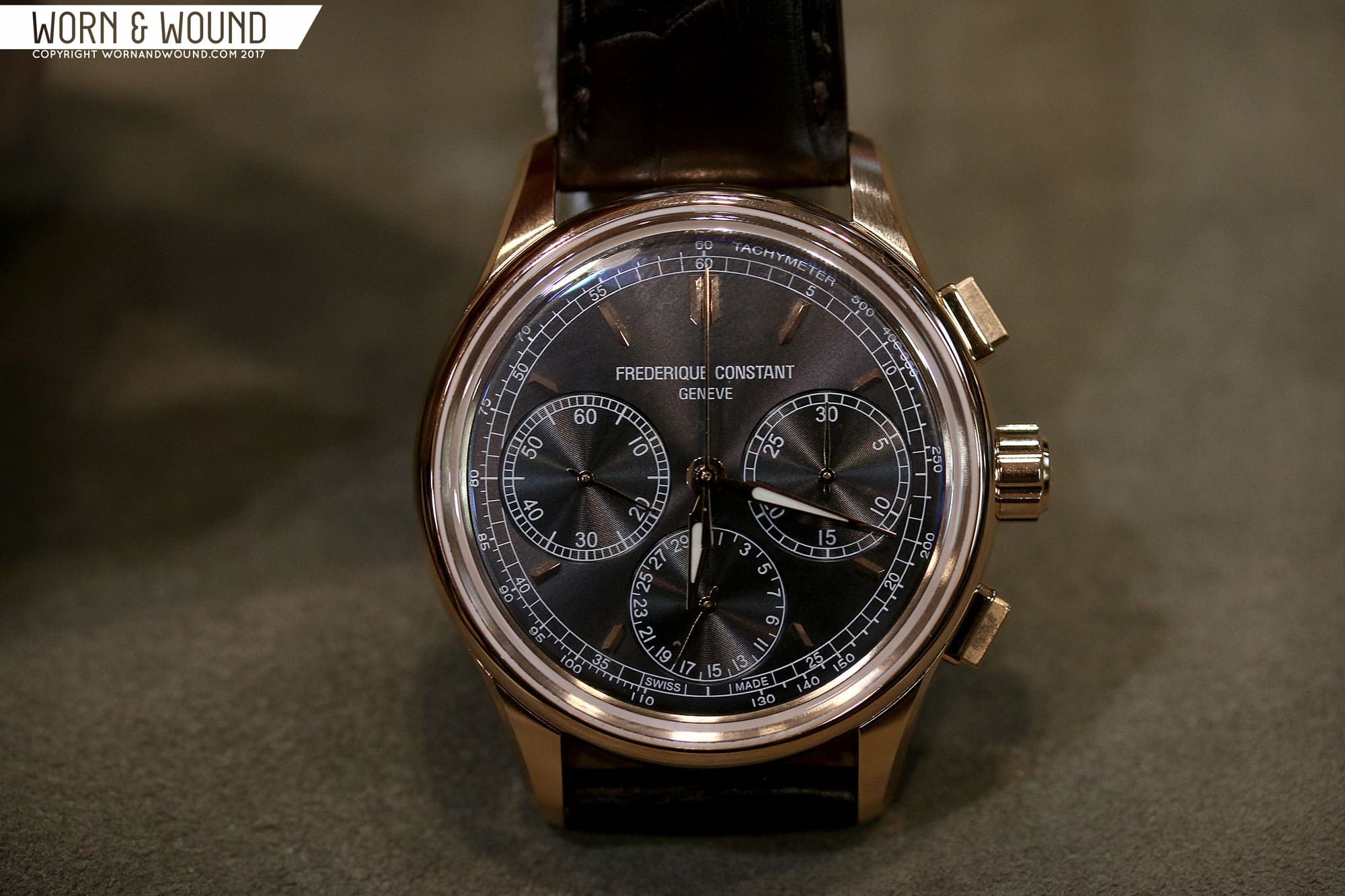It took six years to develop the FC-760 movement inside the Flyback Chronograph Manufacture, says Frederique Constant. And its first flyback chronograph made in-house arrives at Baselworld 2017 in one gorgeous package.
To be fair, the movement first showed up inside Alpina’s Alpiner 4 model in 2015, under the AL-760 name. As Frederique Constant owns Alpina—the long-lived, aviation-themed brand—it was only a matter of time before it made its way underneath a more classic veneer.
What’s so cool about a flyback chronograph? With just one push of a button, a chronograph’s second hand will reset to zero while it’s still running. It eliminates the need to press a button to stop, press a button to reset, and press a button to start again. Compared to a regular chronograph, the complexity is immense. The stopper must not only disengage the seconds hand, but also precisely send it back to the start, in as little time as possible, and reengage—while the chronograph is still running. For some people of adventure, the function is indispensable. Pilots once needed it to navigate: how many seconds to follow a compass bearing before changing direction. Racers of all kinds still use it to time laps. And so forth.









 Featured Videos
Featured Videos





